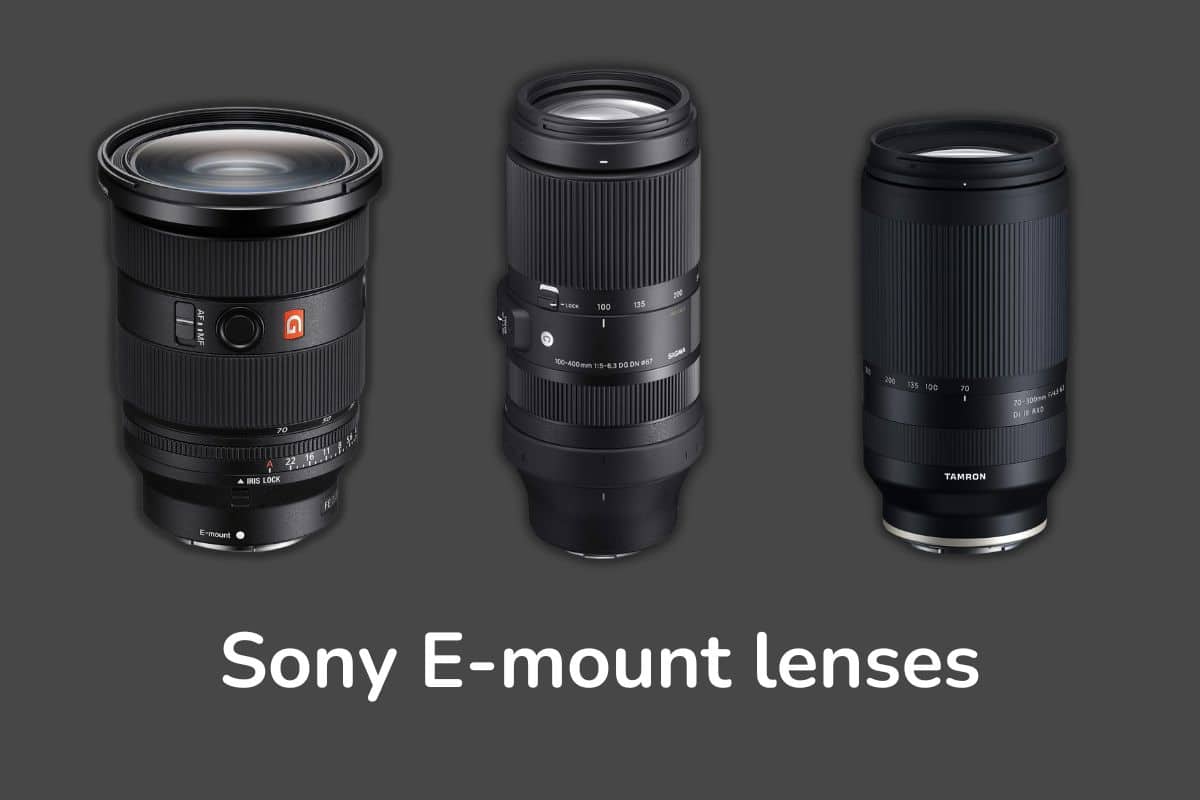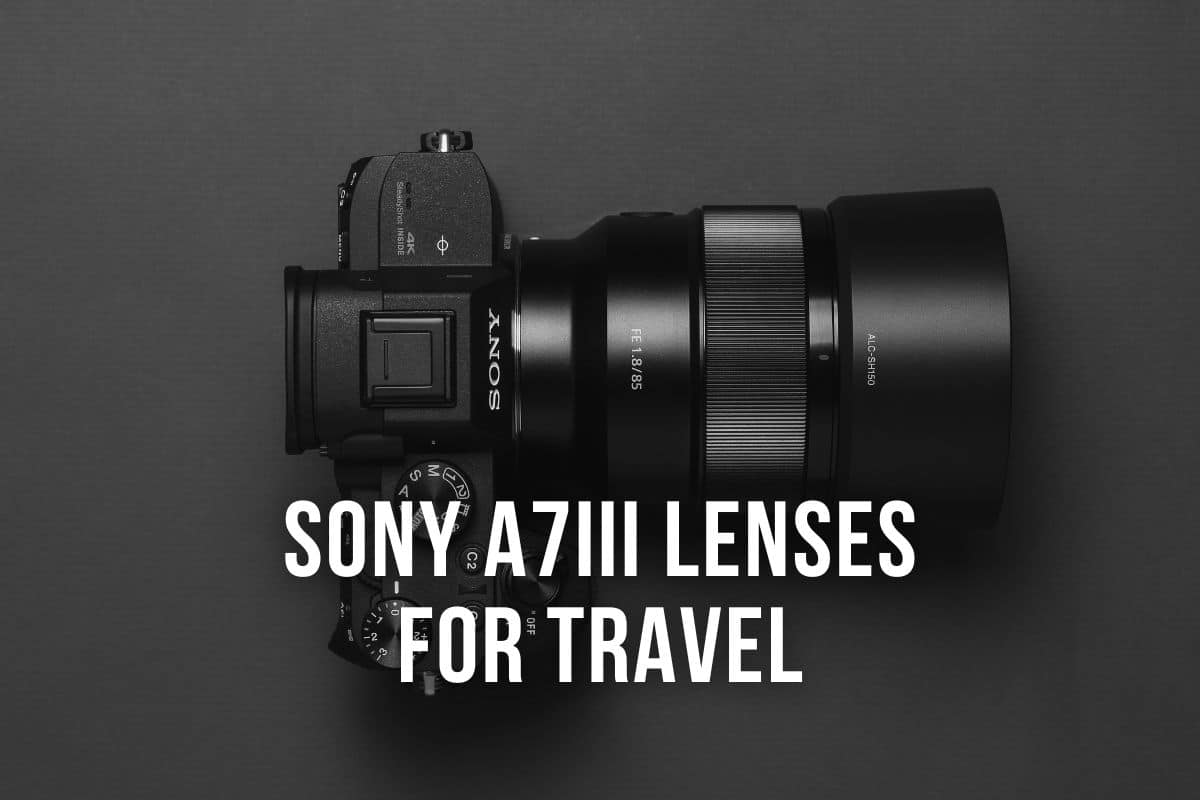Photography is a captivating blend of art and science. The camera lens is at the heart of this blend, a tool that can make or break your images. If you’re a beginner photographer, understanding how to choose the right lens for your needs is crucial.
In this lens selection guide, we’ll walk you through choosing the perfect camera lens tailored to your needs. We’ll explore a range of lens types, from the expansive views of wide-angle lenses to the focused details of telephoto ones.
Together, we’ll dive deep into the significance of focal length, aperture, and other essential features that shape your photographs. By grasping the subtle differences of each lens and aligning them with your specific requirements, you’ll be poised to capture images that truly reflect your vision.

Quick Summary
In this guide on how to choose a camera lens, you will get to know about these topics:
- Understand the Basics: Familiarize yourself with terms like focal length, aperture, zoom vs. prime, sensor size, image stabilization, and focusing.
- Identify Your Photography Style: Whether you’re into landscapes, portraits, wildlife, or macro photography, each genre has specific lens recommendations.
- Set a Budget: Lenses come in a wide price range. While opting for cheaper options is tempting, investing in a quality lens can become a wise investment in the long run.
- Check Compatibility: Ensure the lens you’re eyeing is compatible with your camera.
- Avoid Common Mistakes: Don’t just buy based on brand reputation.
Understanding the Basics
Before diving into lens selection, it’s essential to grasp some basic concepts.
Focal Length
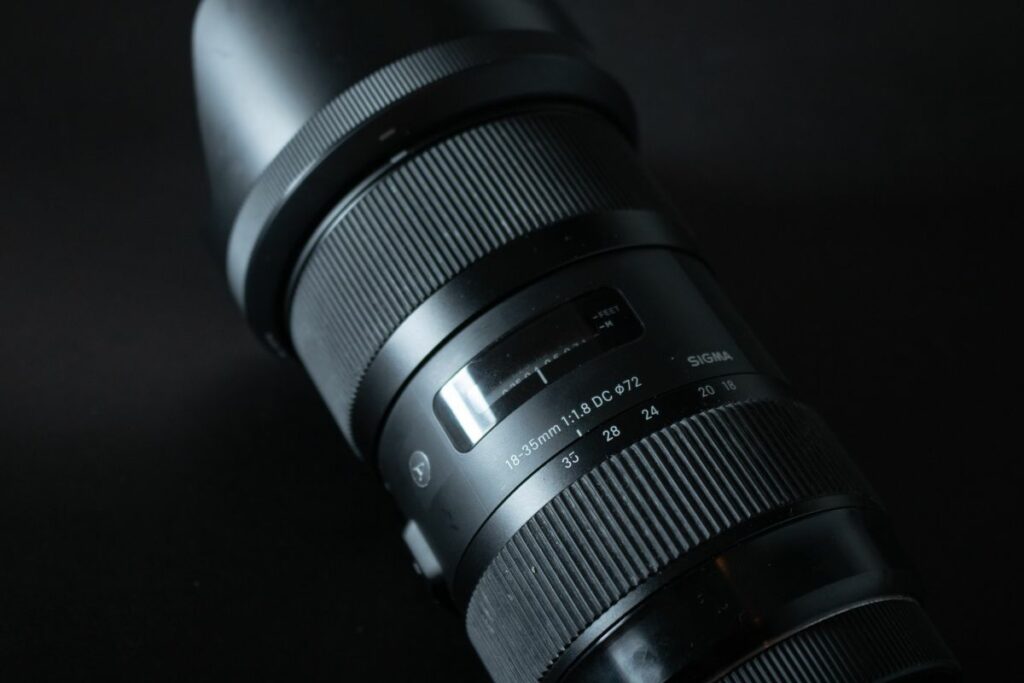
Measured in millimeters (mm), the focal length of a lens determines its angle of view. This is essentially how “zoomed in” your photos appear. The focal length you choose can drastically change the perspective and feel of your photos.
Standard lens: Typically ranging from 35mm to 70mm, these lenses offer a field of view that feels closest to the human eye’s natural perspective. They’re versatile and can be used for various photography styles, including portraits, landscapes, and everyday snapshots.
Wide-angle lens: These lenses have a focal length of less than 35mm. They capture a broader scene view, making them perfect for landscapes, architecture, and interior photography. Wide-angle lenses can also introduce a unique perspective in portraits, but be wary of distortion, especially with ultra-wide angles.
Telephoto lens: With a focal length of 70mm and above, telephoto lenses allow you to zoom in on distant subjects. They’re ideal for wildlife, sports, and, in some cases, portrait photography. A longer focal length, like 200mm or 300mm, can compress the background, making the subject stand out more.
Macro lens: These are specialized lenses designed for extreme close-ups. They have a unique ability to focus closely on subjects, capturing minute details that might be invisible to the naked eye. Macro lenses are perfect for photographing insects, flowers, and detailed textures. The focal length can vary, but what makes them “macro” is their magnification ratio and close focusing ability.
Aperture
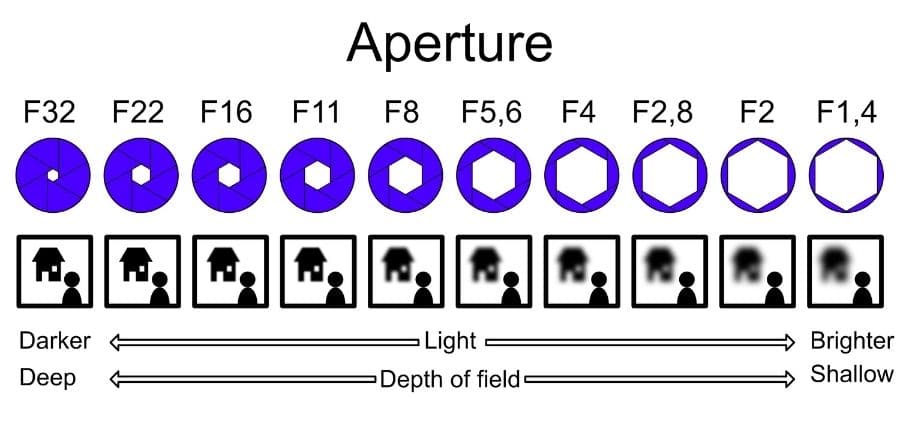
The aperture is a pivotal aspect of photography, influencing the amount of light entering the camera and the depth of field.
What is Aperture? It’s the opening in a lens through which light passes. Represented by f-stop numbers, a smaller f-stop (e.g., f/1.8) means a wider opening, while a larger one (e.g., f/16) is narrower.
Why It Matters? A lens with a wide aperture, like f/1.8, excels in managing light by allowing more of it to enter, making such lenses particularly suited for challenging low-light conditions. A wider aperture not only aids in capturing well-lit images but also produces a distinctively blurred background, drawing attention to the primary subject. Conversely, opting for a smaller aperture ensures that a greater portion of the scene remains in sharp focus, capturing more details throughout the frame.
Consider the lens’s maximum aperture. If you often shoot in dim settings or want pronounced background blur, opt for a lens with a wider aperture. However, these lenses can be pricier, so balance your budget with your needs.
Understanding the aperture helps you choose a lens that aligns with your creative vision and shooting conditions.
Zoom vs. Prime
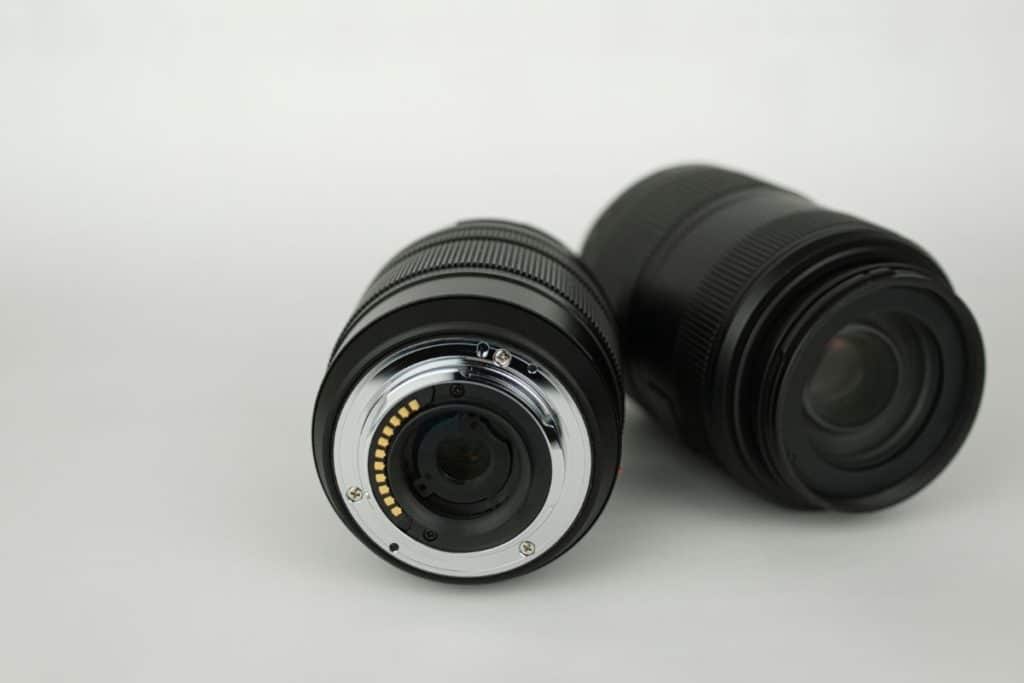
When diving into the world of lenses, the distinction between zoom and prime is fundamental. Here’s what you need to know:
Zoom lenses
It is characterized by variable focal lengths such as 18-55mm, allowing photographers to adjust their view without physically moving. This makes them ideal for dynamic settings or situations where the distance to the subject frequently changes.
However, this versatility comes with certain compromises. Zoom lenses may provide a different level of sharpness or the wide apertures that prime lenses boast, and they often carry the added weight, making them bulkier in comparison.
Prime Lenses
With their fixed focal lengths, like 50mm, prime lenses are renowned for delivering crisper images, often boasting wider apertures that enhance low-light performance and produce a pronounced background blur.
However, the absence of zoom means you’ll need to move closer or further from your subject to adjust your composition. While this can be seen as a limitation, it also nudges photographers towards a more deliberate and creative approach to framing their photographs.
In conclusion, consider your shooting style. If you value adaptability, zooms are appealing. For image quality and low-light prowess, primes shine. Evaluate your needs and prioritize either flexibility or optical excellence.
Sensor size
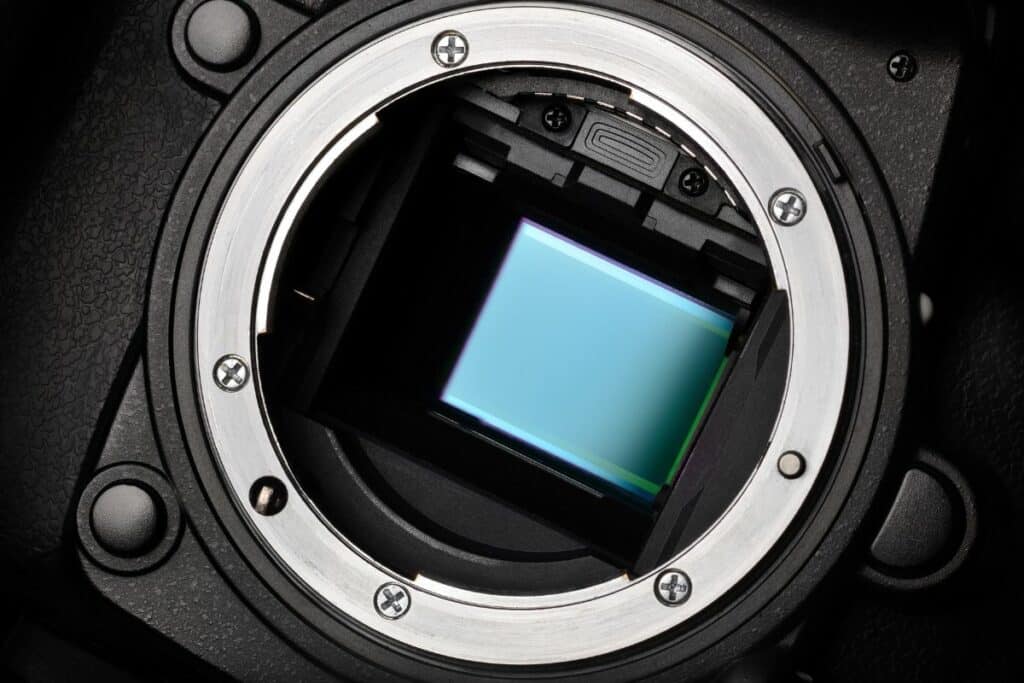
The camera sensor is the digital counterpart to the film in traditional cameras. It records the light that passes through the lens to produce a picture. The sensor’s dimensions play a crucial role in determining the appearance of your photos.
Full-Frame vs. Crop Sensors: The two most common sensor sizes are full-frame and APS-C (often called “crop sensor”). Full-frame sensors are larger and offer a wider field of view, equivalent to traditional 35mm film. Crop sensors, on the other hand, have a smaller physical size, which effectively “crops” the field of view, making it seem as if you’re more zoomed in.
Lens Compatibility: Not all lenses are compatible with all sensor sizes. Some lenses are designed specifically for crop sensors, while others are built for full-frame cameras. Using a lens on a non-compatible camera can result in vignetting or not utilizing the lens’s full potential.
Field of View and Focal Length: The sensor size affects the effective focal length of a lens. For instance, a 50mm lens on a crop sensor camera might give a field of view equivalent to an 80mm lens on a full-frame camera. This is crucial when choosing lenses, especially when switching between crop and full-frame cameras.
Depth of Field: Larger sensors can achieve a shallower depth of field compared to smaller sensors at the same aperture and focal length. This means a full-frame sensor has a natural advantage for those creamy, blurred backgrounds.
Always check the lens’s compatibility with your camera’s sensor size. Also, consider how the sensor size will affect the lens’s effective focal length. If you’re planning to upgrade your camera body in the future, think about how your current lens choices might be affected.
Image stabilisation
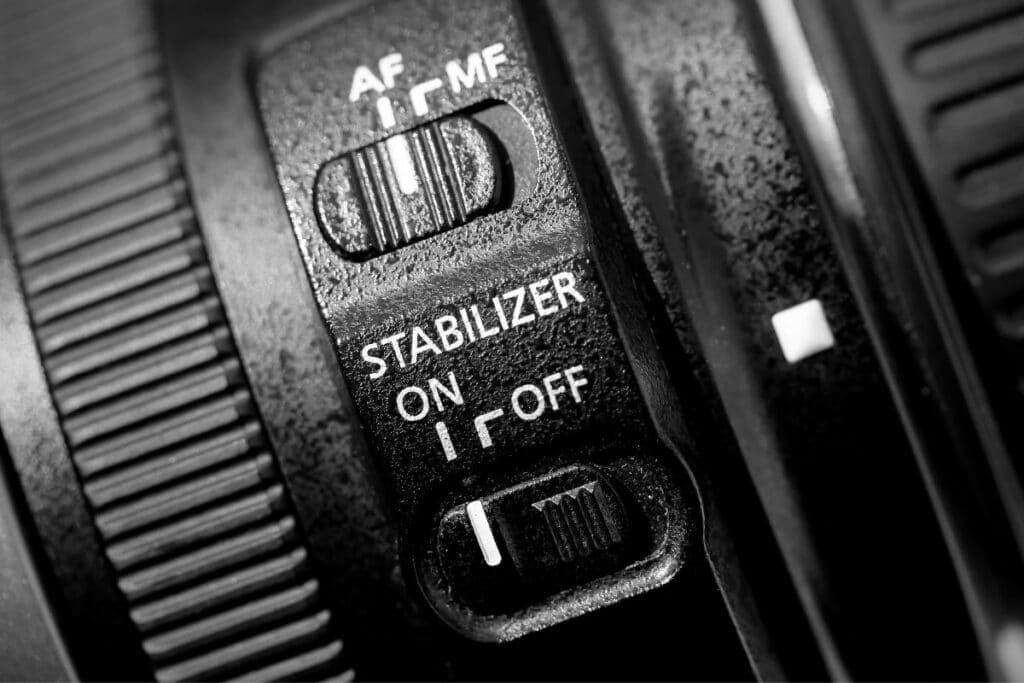
Image stabilization (IS) is used in camera lenses (and sometimes in camera bodies) to counteract camera shake. This is particularly beneficial when shooting at slow shutter speeds or using telephoto lenses.
In low-light situations, image stabilization enables shooting at slower shutter speeds without the risk of motion blur. For those using telephoto lenses, where camera shake is more noticeable, IS becomes crucial in ensuring sharp images. Additionally, videographers benefit from IS as it provides smoother, more professional-looking footage, mainly handheld filming.
When purchasing a lens, several factors should guide your decision. Firstly, consider your photography style: if you frequently work in low light, use long focal lengths, or film videos, a lens with IS can significantly enhance your results.
However, these lenses typically come at a higher price point, so it’s essential to determine if the benefits of IS align with your budget and photographic needs. Additionally, if your camera body features in-body image stabilization (IBIS), it may affect your choice, as you might not require IS in the lens itself.
Focusing

Focusing is a fundamental photography skill to master, ensuring that your subjects are sharp and your images are clear. When choosing a new camera lens, understanding its focusing capabilities is essential.
Auto Focus (AF) vs. Manual Focus (MF): Modern lenses often come with Auto Focus, allowing the camera to automatically adjust the lens to bring the subject into sharp clarity. However, some lenses also offer Manual Focus, giving photographers the control to fine-tune focus themselves. Some lenses provide both options.
Focus Speed: The speed at which a lens can focus is vital, especially for action or wildlife photography. Some lenses focus faster due to better motor technology or design.
Focus Accuracy: A lens that consistently locks onto the intended subject without “hunting” (going back and forth to find focus) is invaluable.
Closest Focusing Distance: This indicates how close you can get to a subject while maintaining focus. It’s essential for macro photography or to capture close-up details.
Internal vs. External Focusing: Lenses with internal focusing (IF) adjust the focus within the lens without changing the lens’s length or rotating the front element. This is beneficial when using polarizing filters or lens hoods.
A fast and accurate AF lens is essential for action shots. For macro or portrait work, the closest focusing distance and the option for manual focus might be more critical. Always check reviews or test the lens to gauge its focusing performance in real-world scenarios.
Factors to Consider When Choosing a Lens
Finally, it’s time to get more specific when understanding the basics.
Your Photography Style
When selecting a lens, you must align your choice with your photography style and the subjects you most frequently capture. Here’s a breakdown based on the most popular photography genres:

Portraits and People: Medium telephoto lenses, like the 85mm, are favored for portrait photography. Their wide apertures allow for a shallow depth of field, beautifully blurring the background and making the subject pop, creating a dreamy, professional look.
Read more: Which is the best lens for portraits?
Landscape: Wide-angle lenses, typically 14-35mm, are perfect for capturing vast, expansive scenes, from rolling hills to city skylines. They offer a broad field of view, ensuring you get all the scenic details.
Related: Landscape photography composition tips.
Wildlife or Sports: Telephoto lenses, ranging from 70-200mm or longer, are essential for these genres. They allow photographers to zoom in on distant subjects, capturing the action without being close, ensuring safety and discretion.
Macro: For those fascinated by the minute details of nature, like the texture of a leaf or the intricate patterns of an insect, specialized macro lenses are the go-to. They can focus closely, revealing details often invisible to the naked eye.
Everyday: For those who want a versatile lens for various scenarios, a standard zoom lens, like a 24-70mm, can be ideal. It balances wide-angle and telephoto, suitable for a mix of portraits, landscapes, and more.

Travel: Carrying multiple lenses can take time and effort when on the move. A travel zoom lens, often spanning from wide-angle to telephoto (e.g., 18-135mm), provides flexibility. It’s versatile enough to capture expansive landscapes, zoom in on distant landmarks, and snap candid moments, all without needing to switch lenses.
Budget
When selecting a lens, budget is a crucial consideration. Lenses vary widely in price, influenced by brand, build, and optical quality factors. While setting a budget is essential, it’s worth noting that investing in a high-quality lens can significantly enhance image results, often making it more cost-effective in the long run.
Instead of acquiring multiple inexpensive lenses, prioritizing one well-crafted lens can offer sharper images and better durability. Balancing immediate costs with long-term photographic goals ensures you get the most value from your investment.
Compatibility
When choosing a lens, compatibility with your camera is paramount. Different camera types, notably DSLRs and mirrorless models, often have distinct lens mounts, making it essential to match the lens to your specific camera brand and model. For example, while Canon’s DSLRs might use the EF mount, their mirrorless counterparts utilize the RF mount.
Though adapters exist to bridge some compatibility gaps, they can sometimes limit certain lens functionalities. Thus, beyond ensuring a lens physically fits, it’s crucial to confirm that all its features will work seamlessly with your camera for optimal performance.
Size and Weight
When selecting a lens, considering its size and weight is crucial, especially for photographers on the move. Frequent travelers or those who value a lightweight setup might prioritize compact lenses for ease and comfort.
However, it’s essential to recognize that smaller lenses sometimes compromise on features like aperture size or build quality. The lens’s ergonomics, influenced by weight, can also impact handling and prolonged use.
Ultimately, photographers should balance the lens’s physical attributes with their specific needs, ensuring a harmonious blend of portability and performance.
Additional Features

Modern lenses often come with additional features designed to enhance the photography experience. Features like Image Stabilization (IS) are invaluable for handheld shooting, minimizing camera shake and ensuring more precise shots in challenging conditions.
Weather sealing protects outdoor shoots, guarding against elements like dust and moisture. Advanced nanocoatings on some lenses reduce flare and ghosting, while silent autofocus motors are a boon for videographers, eliminating distracting noise during recordings.
When choosing a lens, it’s essential to consider these features in tandem with your specific needs and shooting environments, ensuring you’re well-prepared for any photographic challenge.
Common Mistakes to Avoid
Blind Brand Loyalty
Given their reputation for quality, it’s easy to gravitate towards renowned brands. However, this can sometimes lead to overlooking gems from lesser-known manufacturers. Many emerging or less-publicized brands offer lenses that rival or surpass the performance of established brands, often at a more affordable price point.
Not Thinking Long-Term
Photography is an evolving journey. As you grow and refine your skills, your equipment needs might change. When investing in a new lens, it’s essential to consider your current requirements and where you envision your photography heading.
For instance, if you anticipate upgrading your camera body shortly, it’s wise to ensure any new lenses you purchase now will be compatible with potential future equipment.
Bypassing Peer Reviews
While product specifications and descriptions provide a lens’s technical details, they might paint a partial picture of real-world performance and usability. Before making a purchase, delve into reviews from fellow photographers and enthusiasts.
These firsthand accounts can highlight nuances, potential issues, or unexpected benefits that aren’t immediately apparent from manufacturer descriptions. Engaging in photography forums or communities can also be a valuable resource, offering insights and recommendations based on diverse experiences.
How to Choose a Camera Lens That Fits Your Needs?
After this guide, I am sure you will know more about which type of lenses fit your needs.
- First, select your genre and determine which lens type aligns with your preferred style.
- This will help you narrow down many options, allowing you to concentrate primarily on lenses specified by focal length.
- Next, consider specifications and look for features that suit your photography genre.
- Read reviews and choose the camera lens that best fits your requirements.
How to find a suitable lens for your camera?
On the Genem Photography site, you can also find concise lens reviews categorized by the camera body. We have experience with:
FAQs
What factors should I consider when choosing a camera lens?
Consider factors such as your photography style, budget, lens compatibility with your camera, size, and weight of the lens, additional features like image stabilization, and the lens’s focal length and aperture.
How does focal length impact my photos?
Focal length, measured in millimeters (mm), determines the lens’s angle of view. A shorter focal length provides a broader view, suitable for landscapes, while a longer focal length allows you to zoom in on distant subjects, ideal for wildlife or sports photography.
What’s the difference between zoom and prime lenses?
Zoom lenses have variable focal lengths, allowing you to adjust your view without moving. Prime lenses have a fixed focal length, often providing sharper images and wider apertures, but require you to move to adjust your composition.
How does the aperture affect my images?
The aperture determines how much light comes into the camera and impacts the depth of field. A wider aperture (e.g., f/1.8) allows more light in, ideal for low-light conditions, and creates a blurred background. A narrower aperture (e.g., f/16) keeps more of the scene in focus.
Do I need a lens with image stabilization (IS)?
Image stabilization is beneficial for counteracting camera shake, especially at slow shutter speeds or with telephoto lenses. A lens with IS can be advantageous if you often shoot handheld in low light or use long focal lengths.
Are lenses from lesser-known brands reliable?
While renowned brands are known for their quality, many lesser-known brands produce lenses with excellent performance at a more affordable price. Always read reviews and do your research before making a decision.
What common mistakes should I avoid when choosing a lens?
Avoid buying based solely on brand reputation, not considering future photography needs, and overlooking user reviews and firsthand experiences.
